Back when slap bracelets were banned in classrooms and we were all convinced Y2K would destroy civilization, our lunchboxes were packed with neon-colored, sugar-loaded creations that defied both nutrition and logic. From drinks that looked like science experiments to candies that doubled as choking hazards, the ’90s snack scene was nothing short of chaotic — and, let’s be honest, kind of glorious.
But not everything from that era deserves a comeback. Some of those so-called treats were little more than cleverly packaged corn syrup in a bottle. Others? Just pure gimmickry wrapped in bright colors and childhood hype. They might have been fun at the time, but today they feel less like nostalgic gems and more like relics of an era with zero chill about artificial flavoring.
Still, not all ’90s snacks were disasters. Buried under the rubble of sticky wrappers and questionable “fruit” snacks were a few genuinely brilliant creations — snacks that were ahead of their time in flavor, format, or just plain fun. These are the heroes we’re still craving, the ones we’d welcome back with open arms (and mouths) if given the chance.
So grab your Trapper Keeper and fire up that dial-up nostalgia, because we’re diving headfirst into the edible time capsule that was the 1990s. We’re revisiting 7 snacks that aged like warm Surge in a hot car, and 6 that are still iconic enough to deserve a revival today.
Some will make you cringe. Others will make you cheer. Either way, these bites of the past prove that not all snacks are created equal — and some should absolutely stay in the decade that spawned them.
Let the snack showdown begin.
1. Forgettable: Squeezit Drinks

Those plastic bottles filled with artificially colored sugar water were a lunchbox staple. Kids would twist off the tops and squeeze the vibrant liquid directly into their mouths, often resulting in sticky fingers and stained shirts.
Looking back, Squeezits were essentially just water, high fructose corn syrup, and artificial colors with almost zero nutritional value. The excessive packaging also seems wasteful by today’s environmental standards.
Perhaps most concerning was the 2000s rebrand that added color-changing pellets to the bottles – kids were literally dropping mystery tablets into their drinks before consuming them!
2. Forgettable: Wonder Balls
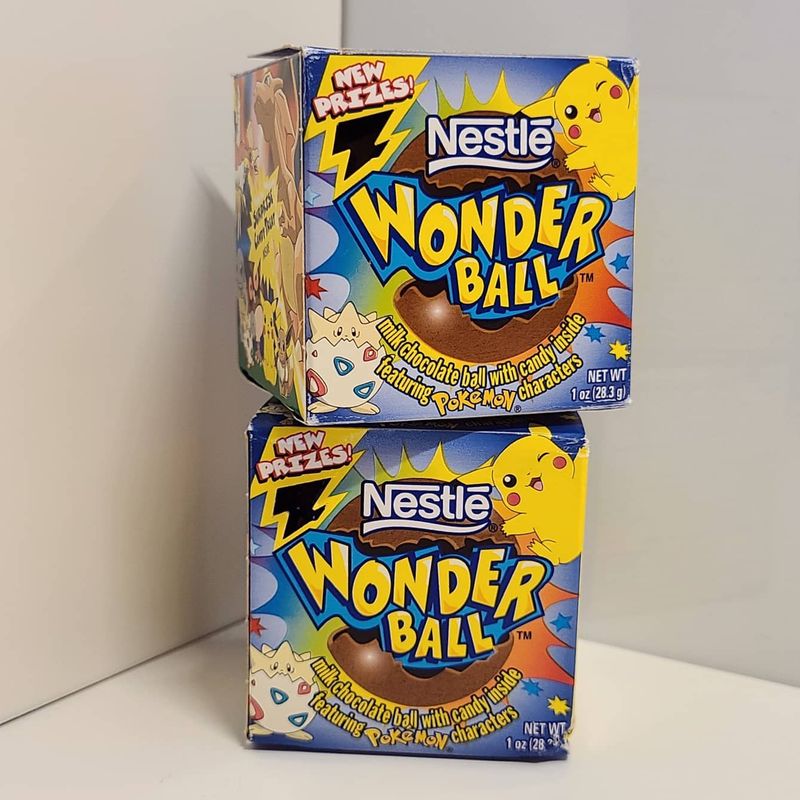
Remember the chocolate spheres with toys hidden inside? Wonder Balls were marketed as magical treats that combined candy with collectible surprises. The original version contained small plastic toys that were eventually deemed choking hazards.
Nestlé later replaced the toys with candy pieces, but the damage was done. Parents remained wary of the concept, and the product never regained its former popularity.
3. Forgettable: Fruit String Thing
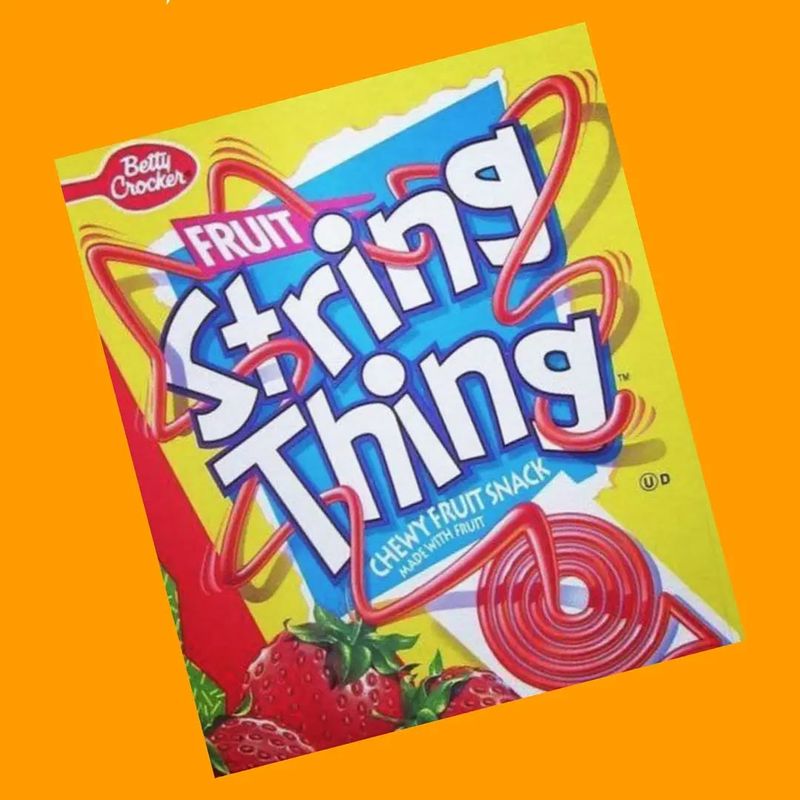
Betty Crocker’s Fruit String Thing promised fruit-flavored fun with its stretchy, weavable candy strings. Kids would spend more time playing with these sticky, rubbery strips than actually eating them.
The product claimed to contain real fruit, but the ingredient list revealed it was mostly corn syrup and artificial flavoring. The texture was oddly plastic-like, and the strips would often get stuck in teeth or collect lint when dropped.
As our understanding of nutrition improved, these sugar-laden, barely-food products lost their appeal. The gimmick of edible string couldn’t compensate for the artificial ingredients and questionable texture.
4. Forgettable: Orbitz Drinks

Orbitz was the lava lamp of beverages – a clear, sweet liquid with colorful edible gel balls suspended throughout. The drink was marketed as a visual spectacle rather than a refreshing beverage.
Drinking Orbitz was a strange experience. The floating balls had a different texture than the liquid, creating an uncomfortable mouthfeel as you tried to swallow both elements together. Many kids collected the bottles more than they actually enjoyed consuming the contents.
The novelty couldn’t overcome the fundamental problem: nobody wants to drink something with floating blobs in it. The product lasted barely a year before disappearing from shelves forever.
5. Surge Soda
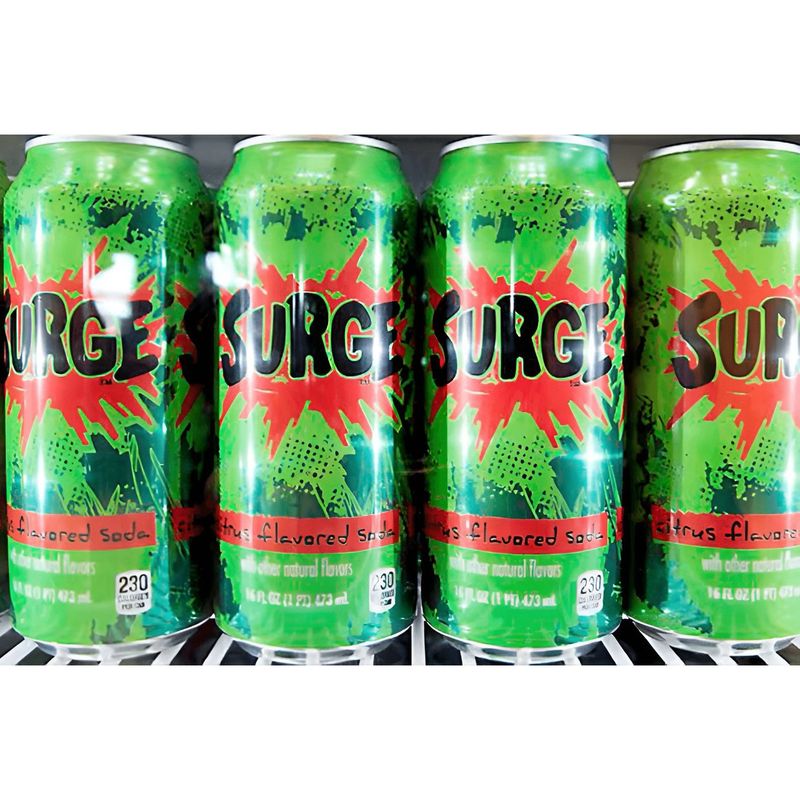
Mountain Dew’s aggressive competitor came in an eye-searing green color with a radical marketing campaign targeting extreme sports enthusiasts. Surge contained more caffeine and sugar than most sodas, creating a generation of hyperactive kids bouncing off walls.
The soda’s slogan – “Feed the Rush” – seems wildly inappropriate by today’s standards. Parents and health advocates would rightfully question a product explicitly designed to amp up children’s energy levels through massive sugar and caffeine doses.
While Surge briefly returned due to nostalgic demand, its excessive formula represents everything nutritional education has taught us to avoid in modern diets.
6. Forgettable: Butterfinger BB’s
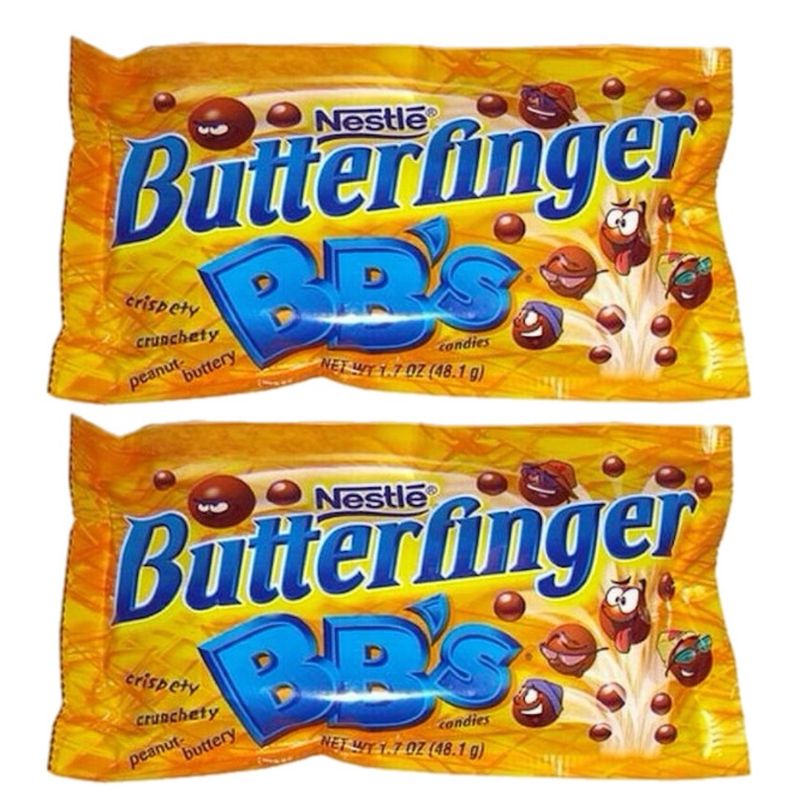
These marble-sized balls of Butterfinger candy seemed like a brilliant idea – all the crispy, peanut buttery goodness without the messy flaking of the full-sized bar. The reality was less impressive.
The spherical shape created an awkward ratio of chocolate coating to filling, and the balls were prone to melting into a sticky mess. Their small size made them easy to spill, and many a parent discovered hardened Butterfinger BBs wedged in car seats and couch cushions.
7. Forgettable: Doritos 3D
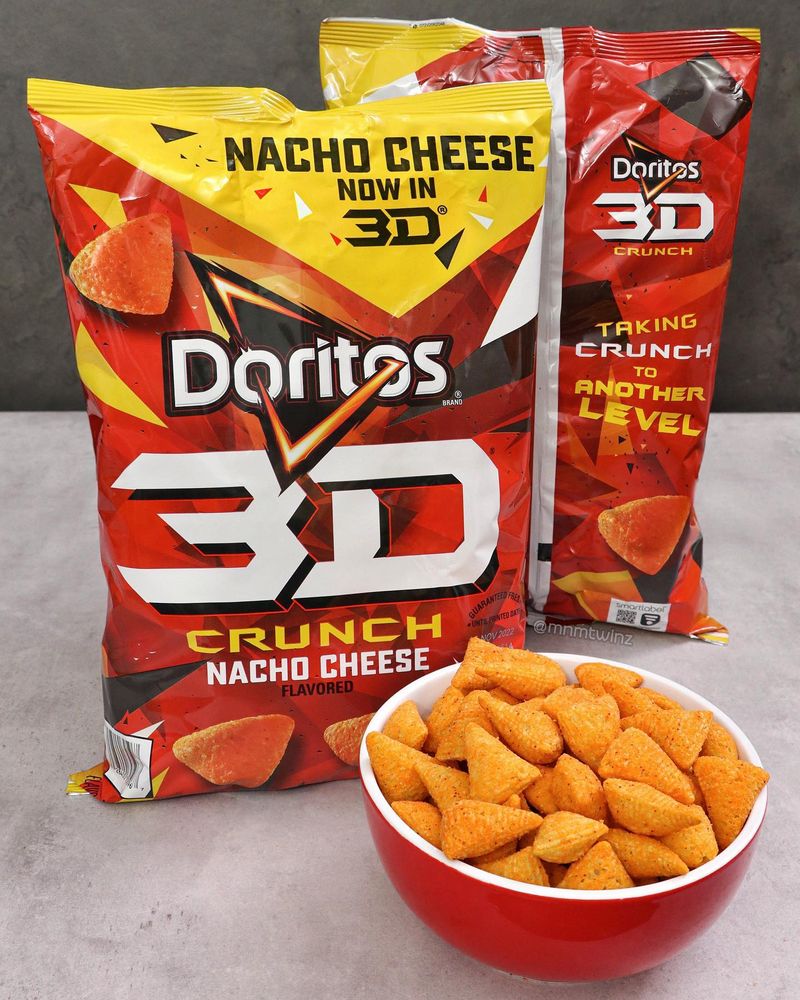
These puffy, three-dimensional triangular chips promised an extra-crunchy Doritos experience. The hollow structure made them lighter and airier than regular Doritos, but also more fragile and less satisfying.
The original 3D Doritos came in a plastic canister similar to tennis balls, creating excessive packaging waste. Once opened, the delicate chips would quickly go stale or get crushed into disappointing fragments.
While Doritos recently revived a version of this product, the original ’90s formula and packaging represent the era’s focus on novelty over substance. The unnecessary “dimensionality” added nothing to the flavor experience while creating more packaging waste.
8. Iconic: Dunkaroos
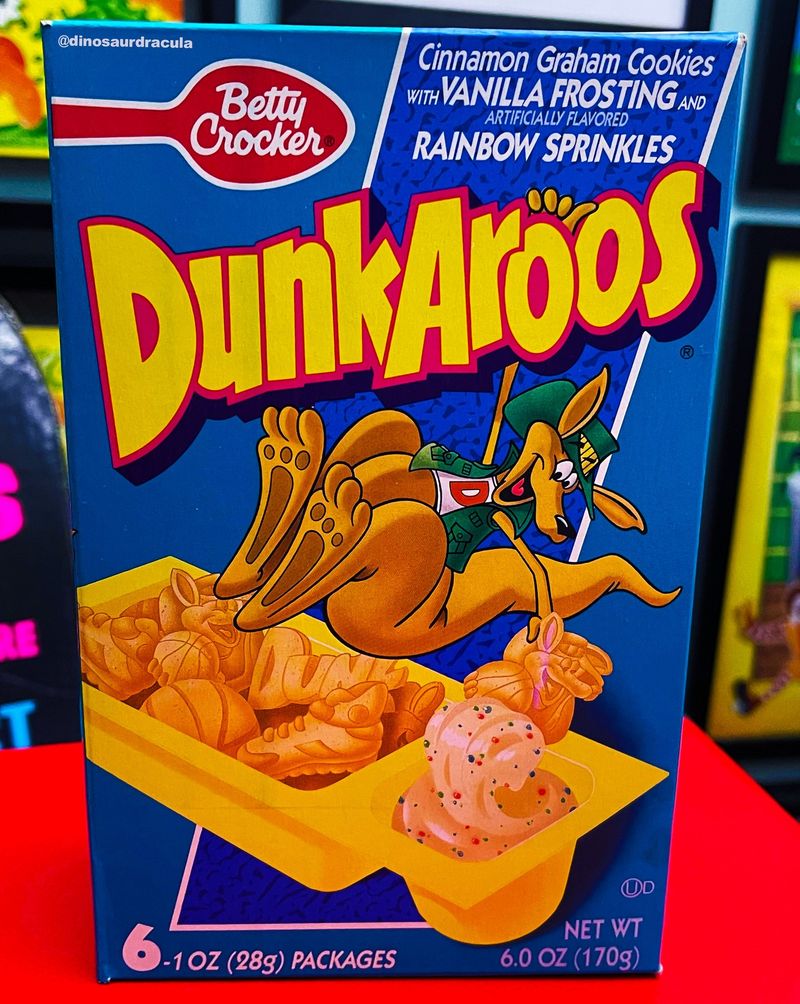
The perfect interactive snack featured small cookies you could dunk into creamy frosting. Each package contained just the right amount of both elements, creating a satisfying treat that kids could control.
Unlike many ’90s snacks, Dunkaroos had a reasonable portion size. The act of dipping slowed down consumption, making the snack experience last longer while preventing mindless overeating.
Modern versions could easily incorporate whole grain cookies and natural flavors while maintaining the fun dipping format. The brief 2020 revival proved demand still exists, but wider distribution and updated ingredients could make Dunkaroos a legitimate snack option for today’s kids.
9. Iconic: PB Crisps
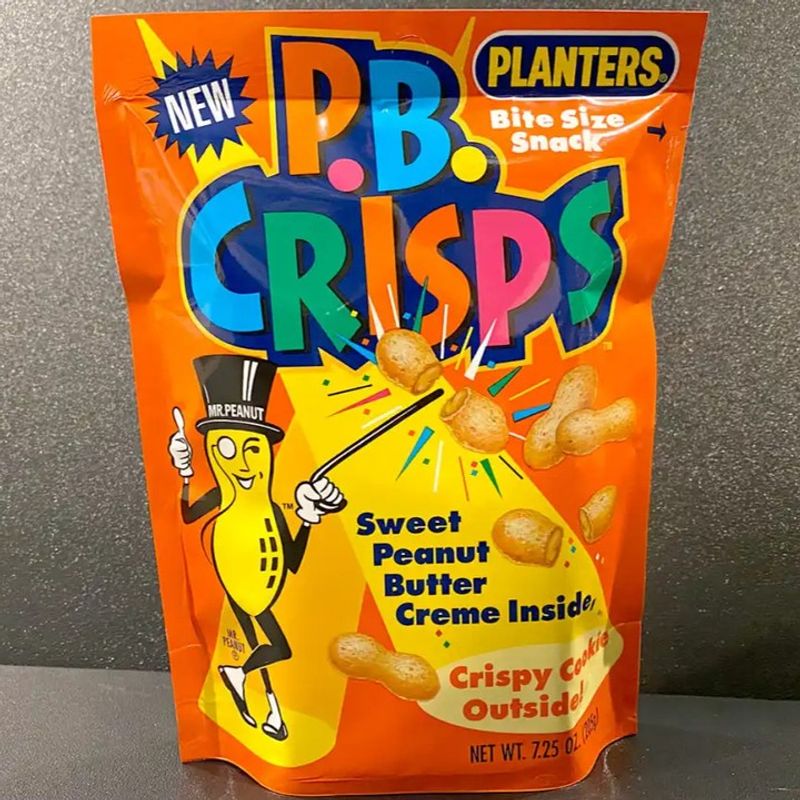
Planters created peanut-shaped cookie shells filled with creamy peanut butter, resulting in a perfect balance of crunch and smoothness. The unique texture combination made them instantly addictive without being overly sweet.
Unlike many candy-adjacent snacks, PB Crisps contained actual nutritional value from real peanut butter. The protein content made them more satisfying than empty-calorie alternatives.
10. Iconic: Trix Yogurt
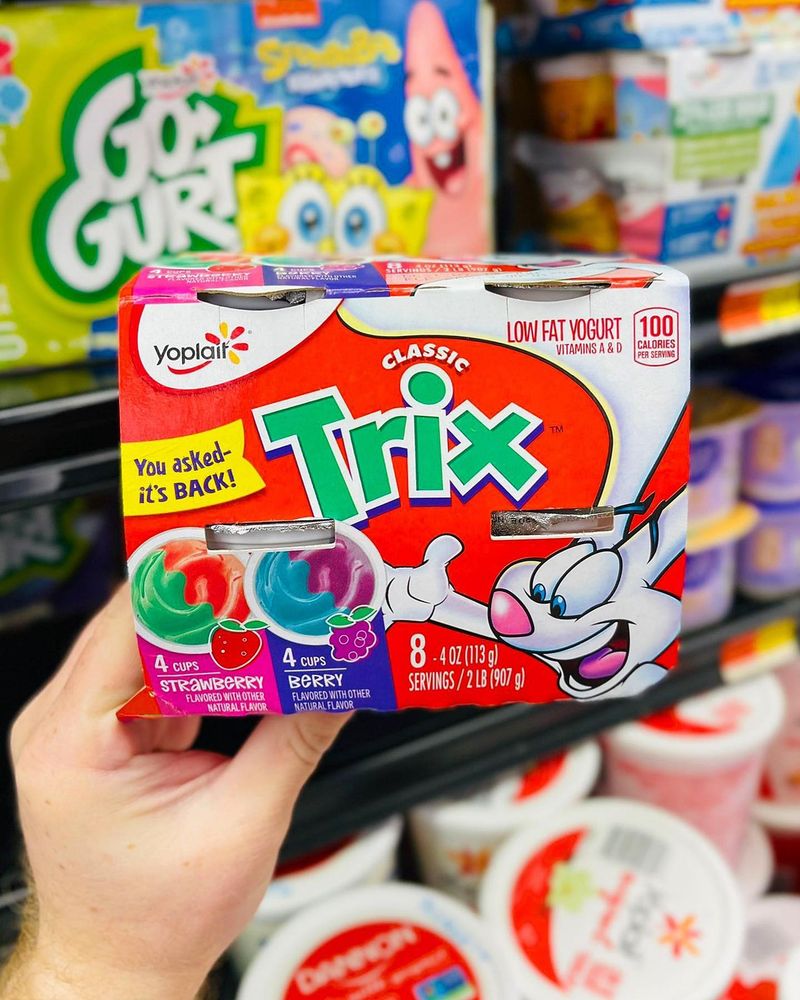
The swirled, rainbow-colored yogurt cups brought excitement to an otherwise ordinary dairy product. Kids loved the vibrant colors and sweet flavors that made healthy yogurt feel like a special treat.
Unlike many ’90s snacks that were pure junk food, Trix Yogurt actually contained calcium, protein, and active cultures beneficial for gut health. The product made eating yogurt fun for children who might otherwise avoid it.
The core concept – making nutritious food visually appealing to kids – remains relevant and valuable in today’s childhood nutrition landscape.
11. Iconic: Crispy M&M’s
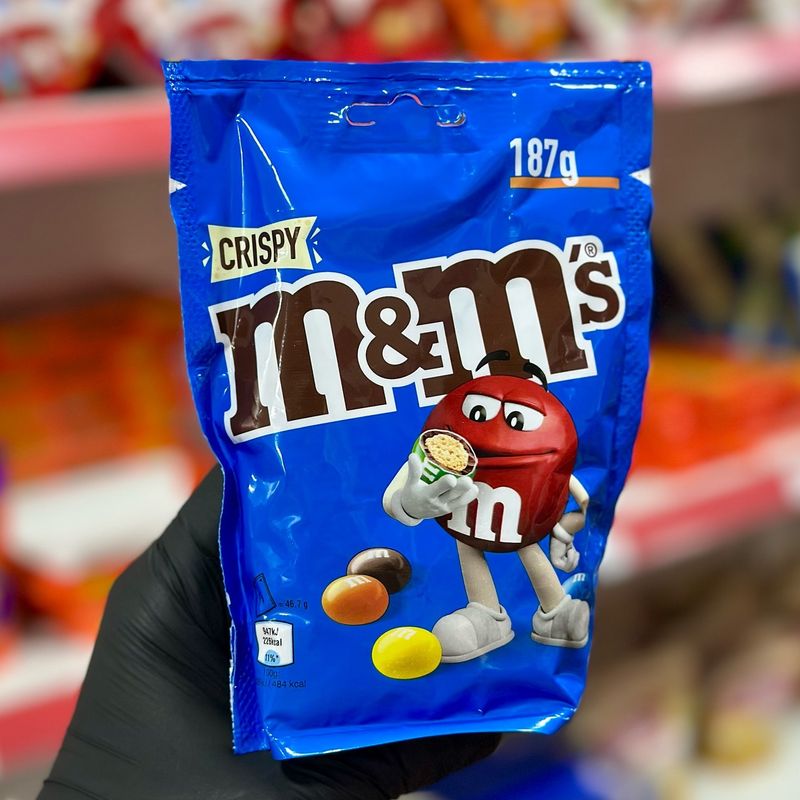
The blue package contained a perfect candy innovation: traditional M&M’s with crispy rice centers that added a satisfying crunch without excessive sweetness. The lighter texture made them less dense than regular M&M’s, creating a more snackable experience.
Mars discontinued these in the U.S. for years while they remained available internationally, creating a cult following. Their brief return proved the enduring appeal of this perfect texture combination.
Crispy M&M’s deserve permanent shelf space again. The rice crisp center provides a lighter alternative to solid chocolate varieties, and the textural contrast makes them uniquely satisfying in a way that no other M&M variant has successfully replicated.
12. Iconic: Waffle Crisp Cereal
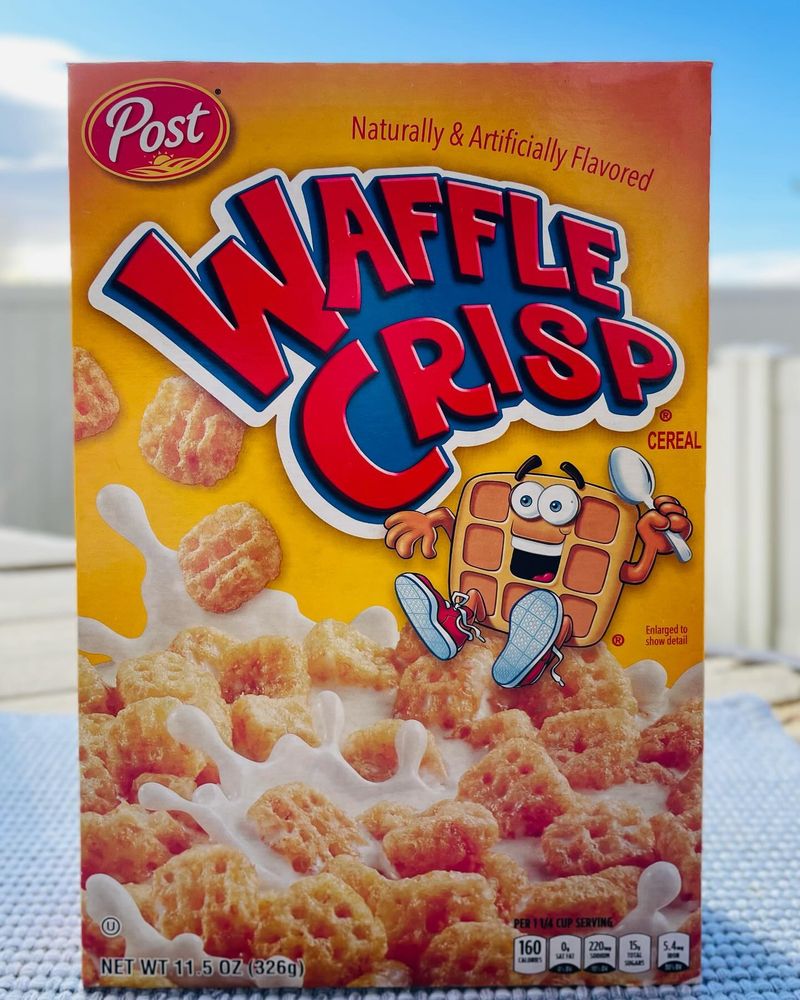
Post’s breakfast masterpiece featured tiny waffle-shaped cereal pieces that genuinely tasted like maple syrup and butter. The cereal maintained its crunch in milk longer than competitors, creating a consistently enjoyable breakfast experience.
The miniature waffle design wasn’t just a gimmick – the grid pattern actually helped hold milk in the squares, delivering flavor in every bite. The maple flavor was surprisingly authentic rather than artificial.
13. Iconic: Snapple Elements
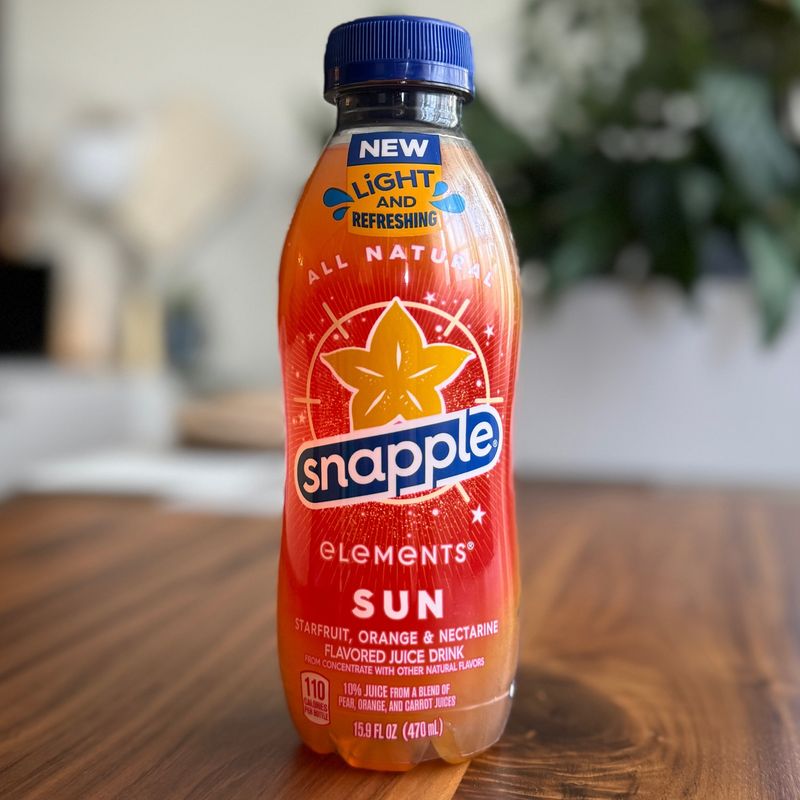
Snapple created a line of drinks named after natural elements – Rain, Fire, Earth, and Sun – packaged in distinctive glass bottles with striking label art. Each flavor was unique and refreshing without tasting artificial.
The drinks balanced sweetness with actual fruit flavors and contained fewer chemicals than many competitors. The element-themed marketing created a connection to nature that felt authentic rather than forced.
Leave a comment